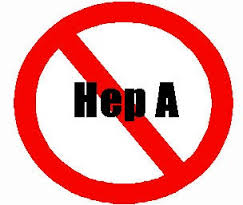If you were deserted on a desert island, what would be the top 5 records/CDs/cassettes/8-tracks you would bring?
Stones, Let it Bleed
Tragically Hip, Up to Here
Blue Rodeo, 5 Days in May
Just a suggestion.
I’m spit-balling here.
Repetition is the norm. Karl Popper had something to say about that.
In 2004, my laboratory reported (and by reported I mean published in a peer-reviewed journal) that, based on 60 hours of detailed viewing of television cooking shows, an unsafe food handling practice occurred about every four minutes, and that for every safe food handling practice observed, we observed 13 unsafe practices. The most common errors were inadequate hand washing and cross-contamination between raw and ready-to-eat foods.
Once the paper was published, it made headlines around the globe.
And then it started getting replicated. Texas, Europe, a few other places, and Massachusetts.
BfR is presenting a research project on the topic of TV kitchen hygiene at International Green Week.
I’ve e-mail the folks at BfR who published this stuff and asked them whether it was peer-reviewed or not.
That was last week.
No answer.
Maybe something was lost in translation.
There were errors on average every 50 seconds, with the most common being dirty hands wiped on a tea towel and chopping boards being reused without first being cleaned.
They then tested two groups of participants making chicken salad with home-made mayonnaise based on a cooking video – one of which showed a chef who followed recommendations and another which showed a cook with poor hygiene.
 Those shown the video with the exemplary kitchen hygiene complied with the recommended measures more frequently when cooking the dish by themselves.
Those shown the video with the exemplary kitchen hygiene complied with the recommended measures more frequently when cooking the dish by themselves.
Prof Hensel added: “The results show that the kitchen hygiene presented in cooking shows may have an influence on the hygiene behaviour of the viewers.
“TV cooking shows can therefore take on a role model function by sharpening awareness of kitchen hygiene instead of neglecting it.”
Keep on spit-balling.
Mathiasen, L.A., Chapman, B.J., Lacroix, B.J. and Powell, D.A. 2004. Spot the mistake: Television cooking shows as a source of food safety information, Food Protection Trends 24(5): 328-334.
Consumers receive information on food preparation from a variety of sources. Numerous studies conducted over the past six years demonstrate that television is one of the primary sources for North Americans. This research reports on an examination and categorization of messages that television food and cooking programs provide to viewers about preparing food safely. During June 2002 and 2003, television food and cooking programs were recorded and reviewed, using a defined list of food safety practices based on criteria established by Food Safety Network researchers. Most surveyed programs were shown on Food Network Canada, a specialty cable channel. On average, 30 percent of the programs viewed were produced in Canada, with the remainder produced in the United States or United Kingdom. Sixty hours of content analysis revealed that the programs contained a total of 916 poor food-handling incidents. When negative food handling behaviors were compared to positive food handling behaviors, it was found that for each positive food handling behavior observed, 13 negative behaviors were observed. Common food safety errors included a lack of hand washing, cross-contamination and time-temperature violations. While television food and cooking programs are an entertainment source, there is an opportunity to improve their content so as to promote safe food handling.













